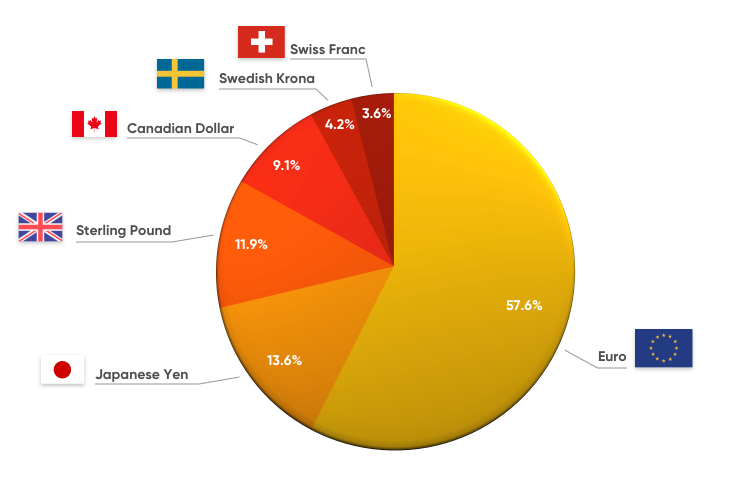
Stock trading is an exciting and potentially lucrative way to grow wealth. However, it requires skill, knowledge, and a solid strategy to succeed, especially with the market conditions constantly evolving. In 2024, making money trading stocks is likely to be influenced by various factors such as technological advancements, economic conditions, geopolitical shifts, and new market trends. In this comprehensive guide, we’ll explore how to make money trading stocks in 2024, including key strategies, tools, and tips to help you navigate the markets.
Table of Contents
- Understanding the Stock Market in 2024
- Why Stock Trading Can Be Profitable
- Types of Stock Traders
- Key Strategies for Trading Stocks in 2024
- Day Trading
- Swing Trading
- Momentum Trading
- Trend Following
- Choosing the Right Stocks
- Fundamental Analysis
- Technical Analysis
- Tools for Stock Trading in 2024
- Risk Management
- Setting Stop-Loss and Take-Profit Levels
- The Importance of Position Sizing
- Psychological Aspects of Stock Trading
- Stock Market Trends for 2024
- Technological Stocks
- Sustainability and Green Energy Stocks
- The Impact of AI and Automation on Trading
- Common Mistakes to Avoid in Stock Trading
- Conclusion
1. Understanding the Stock Market in 2024
The stock market is a dynamic environment that is influenced by various factors such as corporate earnings, economic indicators, interest rates, inflation, and geopolitical events. In 2024, the stock market will continue to evolve with new technologies, regulatory changes, and shifts in investor sentiment. To successfully trade stocks, you need to understand these factors and how they impact stock prices.
Key Market Influencers for 2024:
- Inflation and Interest Rates: Central bank policies, particularly in the US (Federal Reserve), will continue to influence market sentiment and stock prices.
- Technological Innovations: AI, machine learning, blockchain, and 5G will have significant impacts on various industries, creating new opportunities in tech stocks.
- Geopolitical Events: Political instability, trade policies, and international relations can cause volatility in the stock market, impacting global industries and investor behavior.
2. Why Stock Trading Can Be Profitable
Stock trading allows individuals to profit from the price movements of publicly traded companies. Unlike long-term investing, stock traders take advantage of short-term fluctuations to make profits quickly. There are several ways that stock trading can be profitable:
- Price Appreciation: Buying stocks at a lower price and selling them at a higher price.
- Dividends: Some companies pay dividends, providing an income stream in addition to capital gains.
- Short Selling: Profiting from a decline in stock price by borrowing shares and selling them, then repurchasing them at a lower price.
3. Types of Stock Traders
Before diving into the strategies, it’s essential to understand the different types of stock traders and trading styles:
Day Traders
Day traders buy and sell stocks within the same trading day, aiming to capitalize on small price movements. They do not hold positions overnight.
Swing Traders
Swing traders hold stocks for several days or weeks, capturing medium-term price moves. They combine technical and fundamental analysis to identify entry and exit points.
Momentum Traders
Momentum traders seek to capitalize on strong price movements in a stock, often buying into an uptrend and selling when momentum wanes.
Trend Followers
Trend-following traders identify stocks in a trending market (up or down) and enter trades in the direction of the trend. They ride the trend until it shows signs of reversing.
4. Key Strategies for Trading Stocks in 2024
Day Trading
Day trading involves making multiple trades within the same day to capitalize on small price movements. In 2024, day traders can leverage advanced trading platforms, algorithmic trading, and real-time news feeds to identify short-term opportunities. It’s crucial to use technical analysis to find patterns and make fast decisions.
- Indicators: Moving Averages, Relative Strength Index (RSI), and Bollinger Bands.
- Tools: Trading software with real-time data, stock screeners, and hotkeys for quick execution.
Swing Trading
Swing traders aim to capture a “swing” or movement in a stock’s price over a few days or weeks. This strategy is ideal for part-time traders as it doesn’t require constant monitoring. In 2024, swing traders should look for sectors poised for growth, such as tech, green energy, or healthcare, and trade the trends within those sectors.
- Indicators: Fibonacci retracement, MACD (Moving Average Convergence Divergence), and price channels.
- Timeframes: Typically 4-hour or daily charts to identify swing points.
Momentum Trading
Momentum trading involves riding the wave of strong price movements, often driven by news or earnings announcements. In 2024, with the rise of retail investors and social media platforms like Reddit, momentum trading is expected to continue being popular. Identifying stocks with high trading volumes and strong upward or downward momentum can lead to substantial gains.
- Indicators: Volume, MACD, and RSI.
- Watchlists: Follow stocks that are making headlines or seeing unusual trading activity.
Trend Following
Trend following is about recognizing and riding trends in the market. In 2024, this could involve identifying emerging trends in industries like AI, automation, and biotechnology. Traders wait for confirmation that a trend is strong before entering a trade and use trailing stop losses to lock in profits as the trend continues.
- Indicators: Moving Averages (especially 50-day and 200-day), ADX (Average Directional Index), and trendlines.
5. Choosing the Right Stocks
Choosing the right stocks is one of the most important decisions a trader can make. It involves analyzing both fundamental and technical factors to find stocks with high potential for profit.
Fundamental Analysis
Fundamental analysis looks at a company’s financial health, management team, industry position, and overall market conditions. Key metrics to consider include:
- Earnings per Share (EPS)
- Price-to-Earnings (P/E) Ratio
- Revenue Growth
- Debt Levels
In 2024, companies in high-growth sectors like technology, clean energy, and healthcare may present strong opportunities for traders who base decisions on fundamentals.
Technical Analysis
Technical analysis focuses on price patterns, chart formations, and indicators to predict future price movements. Popular tools include:
- Candlestick Patterns: Bullish engulfing, Doji, and hammer.
- Support and Resistance Levels: These indicate where price is likely to reverse or continue.
- Volume: Increasing volume during a price rise suggests strong buying interest.
6. Tools for Stock Trading in 2024
To succeed in 2024, stock traders need the right tools. Some essential tools include:
- Trading Platforms: Interactive Brokers, ThinkorSwim, and MetaTrader provide sophisticated tools for charting, order execution, and analysis.
- Stock Screeners: Finviz, Trade Ideas, and Yahoo Finance help filter stocks based on specific criteria like market cap, price, or volume.
- Real-Time News Feeds: Platforms like Bloomberg, Reuters, and TradingView provide real-time updates on market-moving news.
- AI-Powered Trading Tools: Machine learning and AI tools are becoming increasingly popular for predicting price movements and identifying opportunities.
7. Risk Management
Effective risk management is crucial to surviving and thriving as a stock trader in 2024. Risk management involves determining how much of your capital to risk on each trade, setting stop-loss orders, and planning your trades with a clear exit strategy.
Setting Stop-Loss and Take-Profit Levels
Stop-loss orders automatically sell your position when the stock reaches a predetermined price, preventing large losses. Take-profit orders lock in gains by selling when the stock hits a certain profit level. These tools allow traders to manage risk and ensure they exit trades according to their plan.
The Importance of Position Sizing
Position sizing refers to the number of shares or contracts you buy or sell in a trade. It is based on your risk tolerance, account size, and the trade setup. For example, you might only risk 1-2% of your account on any given trade.
8. Psychological Aspects of Stock Trading
The psychological aspect of trading is often overlooked, but it is critical to long-term success. Emotional reactions to market movements can lead to impulsive decisions, which can hurt your trading performance.
Common Psychological Pitfalls:
- Fear of Missing Out (FOMO): Jumping into trades because a stock is skyrocketing without proper analysis.
- Overconfidence: Becoming too confident after a few wins can lead to over-leveraging and significant losses.
- Loss Aversion: Holding onto losing trades in the hope that they will recover, rather than cutting losses early.
To overcome these challenges, traders should create a disciplined trading plan and stick to it, regardless of market conditions.
9. Stock Market Trends for 2024
Several key trends will likely shape the stock market in 2024. Savvy traders should stay informed of these trends and adjust their strategies accordingly.
Technological Stocks
Tech stocks are expected to continue leading the market in 2024, driven by AI, machine learning, blockchain, and cloud computing advancements. Traders should focus on major players like Microsoft, Google, and NVIDIA, as well as smaller companies developing cutting-edge technologies.
Sustainability and Green Energy Stocks
Sustainable investing is becoming increasingly popular, and companies involved in renewable energy, electric vehicles, and sustainability technologies are expected to grow in 2024. Look for stocks in sectors like solar energy, electric vehicle infrastructure, and clean energy solutions.
The Impact of AI and Automation on Trading
AI and automation are transforming how trades are executed, analyzed, and managed. Automated trading systems are becoming more common, helping traders make faster decisions based on complex algorithms. Staying informed about advancements in AI trading tools could provide an edge in the market.
10. Common Mistakes to Avoid in Stock Trading
To increase your chances of success, it’s essential to avoid common mistakes that many traders make. These include:
- Over-Leveraging: Trading with too much borrowed money can amplify losses.
- Ignoring Risk Management: Failing to set stop-loss orders can lead to significant losses.
- Overtrading: Making too many trades can increase transaction costs and reduce profits.
- Following the Crowd: Jumping on trends without analysis can lead to losses when the market shifts.
11. Conclusion
Making money trading stocks in 2024 is about staying informed, using the right tools, and sticking to a well-thought-out strategy. By mastering different trading strategies, performing solid stock analysis, and managing your risk effectively, you can increase your chances of success in the stock market. Whether you’re a day trader looking for short-term profits or a swing trader aiming to capture longer price movements, the key to success lies in preparation, discipline, and adaptability to market changes.
Stay on top of market trends, leverage advanced trading tools, and maintain a disciplined approach to stock trading to capitalize on opportunities in 2024.









